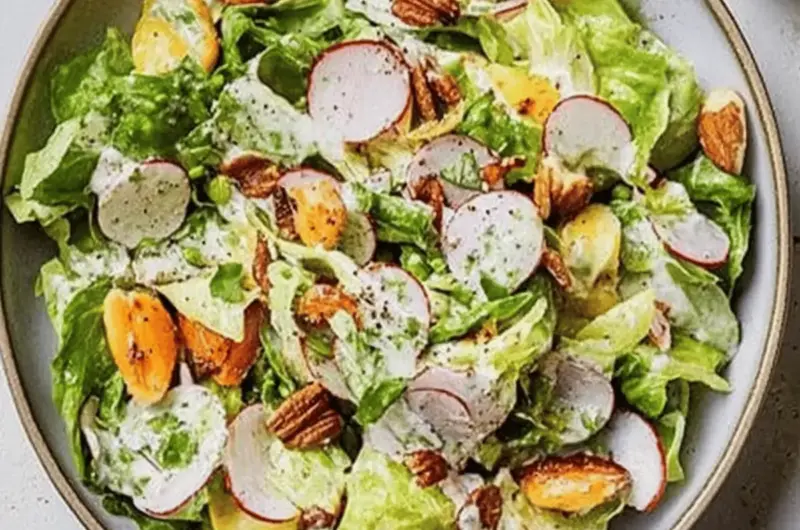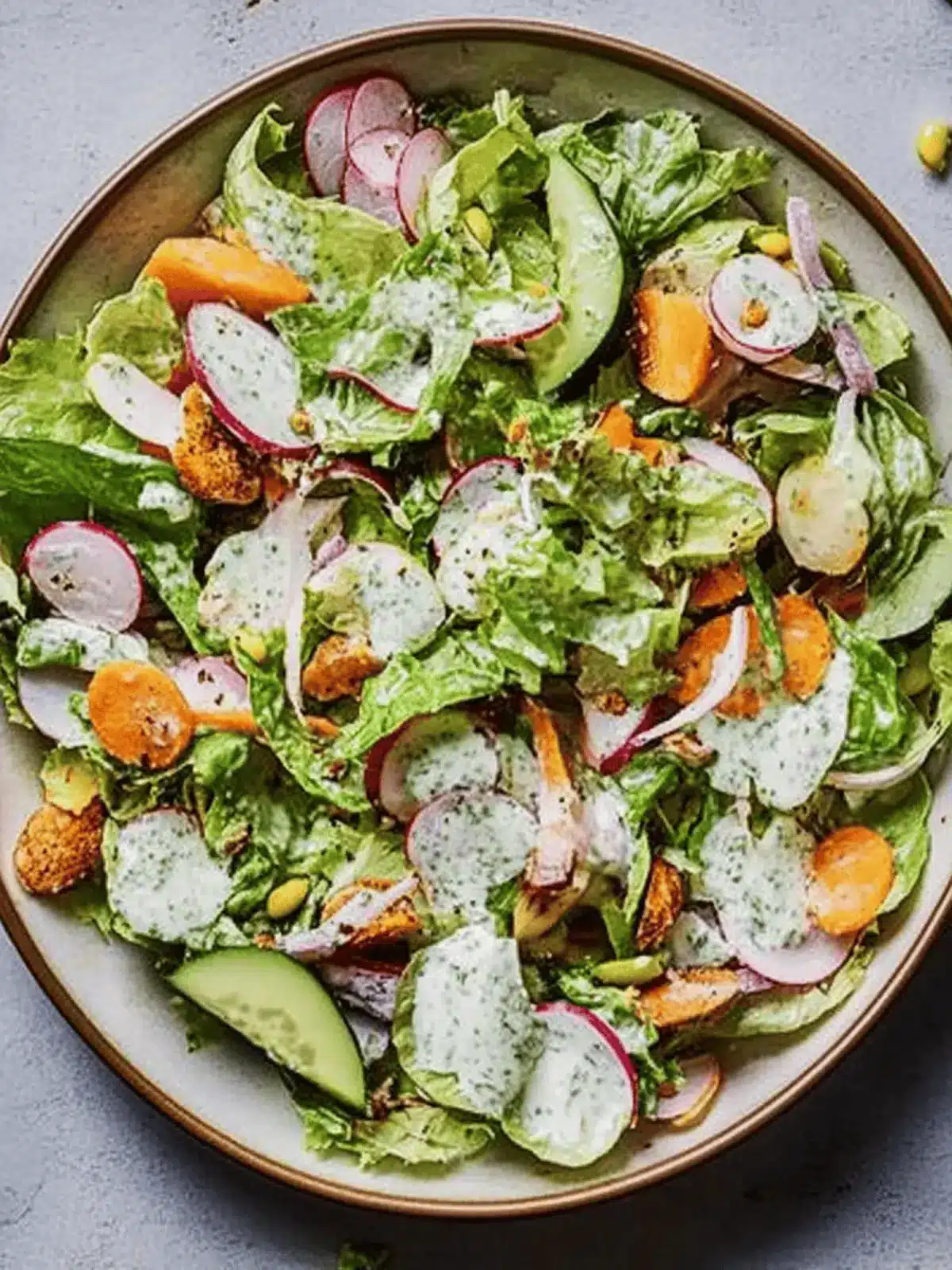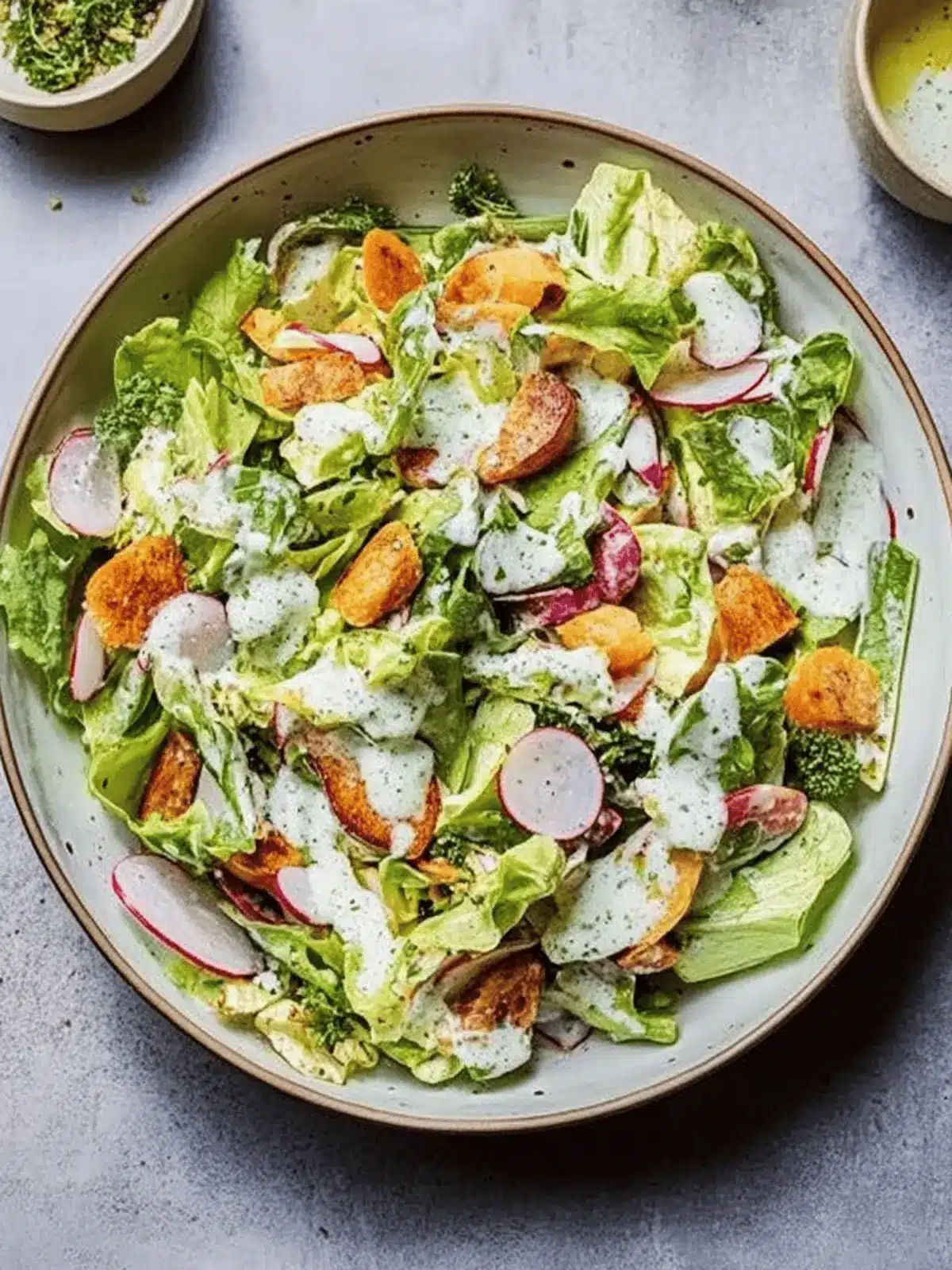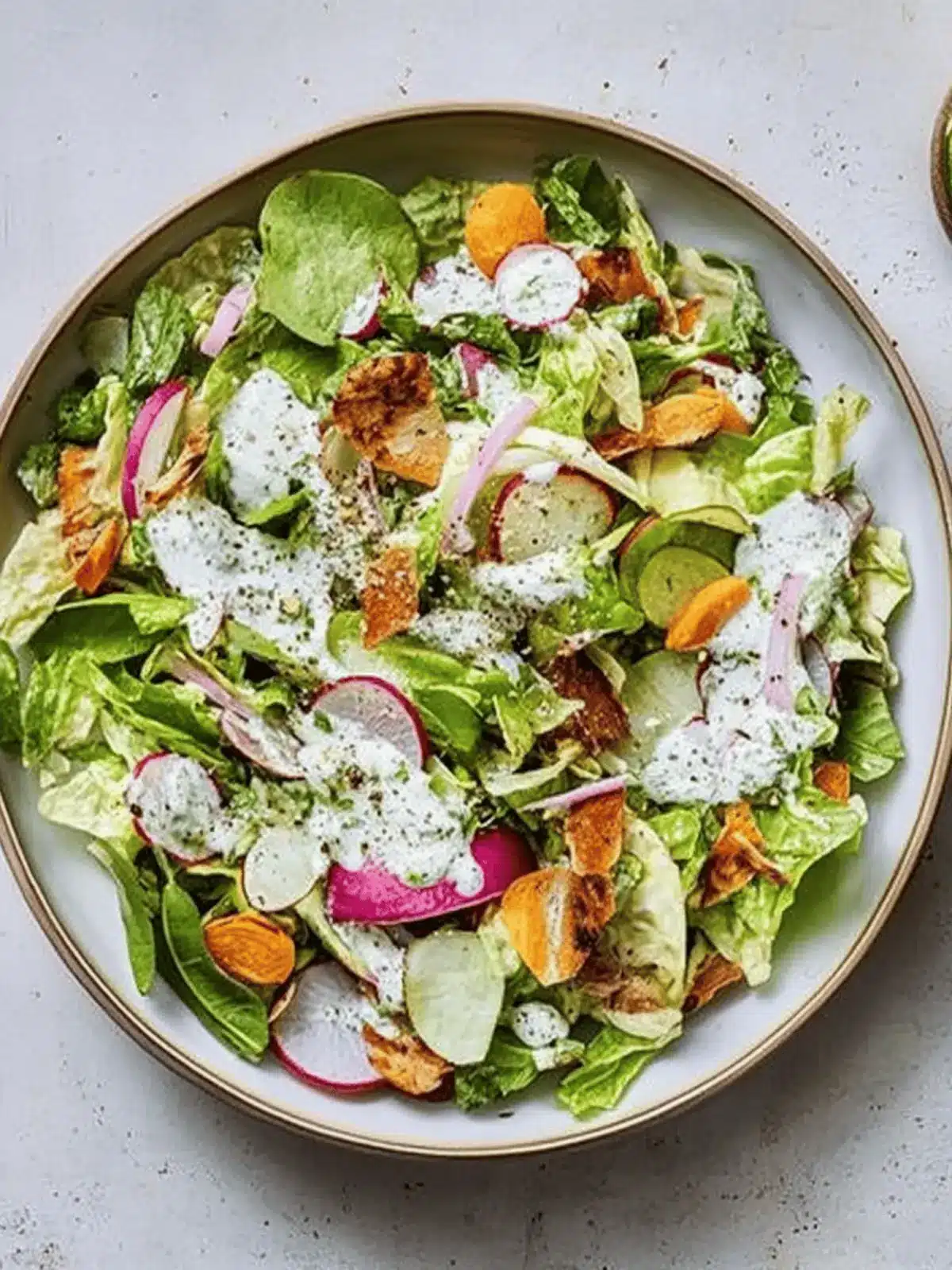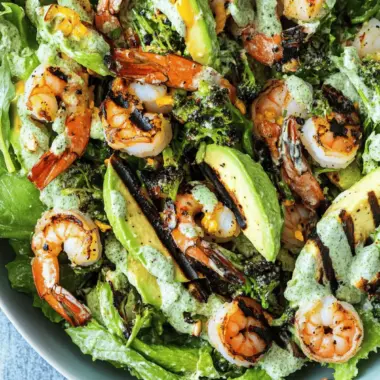As the sun shines brighter and the days grow longer, nothing beckons a refreshing meal quite like a delightful Summer Salad with Clean Eating Buttermilk Dressing. The moment I tossed the crispy lettuce with vibrant radishes, sweet peas, and tender asparagus, I knew this would become my go-to dish for warm afternoons. Each bite bursts with flavor, and the creamy buttermilk dressing—a luscious blend of Greek yogurt and fresh herbs—elevates the wholesome palette of seasonal vegetables to new heights.
This salad is more than just a pretty plate; it’s a celebration of clean eating that keeps your taste buds dancing. Whether you’re preparing a quick lunch or a light dinner, this recipe comes together effortlessly, making it perfect for busy days. So let’s dive into the simplicity and satisfaction of this vibrant dish, which promises to nourish your body and invigorate your spirit, just when you need it most.
Why is this Summer Salad with Clean Eating Buttermilk Dressing a Must-Try?
Flavor Explosion: Each bite offers a refreshing combination of crisp vegetables, highlighting the natural sweetness of summer.
Healthy Ingredients: Nourishing and clean, this salad prioritizes whole foods, perfect for any health-conscious eater.
Quick & Easy: With minimal prep, you can whip this up in no time, making it ideal for busy weeknights or casual gatherings.
Versatile Base: Feel free to customize with your favorite vegetables or proteins, ensuring it suits any taste preference.
Visual Appeal: Its vibrant colors make for a stunning presentation, impressing guests at picnics or dinner parties.
Unlock the full potential of nutritious meals with this delightful recipe, and for more delicious ideas, be sure to check out my guide on clean eating meals.
Summer Salad with Clean Eating Buttermilk Dressing Ingredients
For the Dressing
- Buttermilk – Thin consistency enhances the dressing; use milk with a splash of vinegar as a substitute if needed.
- Greek Yogurt (plain) – Provides creaminess and tang; non-dairy yogurt serves as a good vegan alternative.
- Shallot – Adds a mild onion flavor; green onions or red onions can be swapped based on preference.
- Garlic Clove – Offers aromatic depth; fresh garlic is best, but garlic powder can be used in a pinch.
- Thyme Leaves (fresh) – Adds a fragrant note; substitute with dried thyme at a lower ratio if fresh isn’t available.
- Parsley (fresh, chopped) – Brightens and adds color; consider cilantro for a different flavor twist.
- Apple Cider Vinegar – Balances the dressing’s acidity; white vinegar can also work as a substitute.
For the Salad
- Boston Lettuce (or Bibb Lettuce) – Serves as a crisp base; Iceberg lettuce can be a fantastic alternative if preferred.
- Radishes – Provide crunch and slight spiciness; Daikon radishes could be used instead.
- Carrots (grated) – Contribute sweetness and color; other root vegetables like zucchini make a great substitute.
- Peas (fresh or frozen) – Introduce sweetness and nutrition; edamame can serve as another tasty option.
- Asparagus (chopped) – Offers a tender-crisp texture; swap with green beans for a similar crunch.
- Sprouts – Garnish for added nutrition; microgreens can be a delightful alternative in presentation.
Feel free to mix and match ingredients to enhance your Summer Salad with Clean Eating Buttermilk Dressing, ensuring it reflects your personal taste and dietary needs!
How to Make Summer Salad with Clean Eating Buttermilk Dressing
-
Make the Dressing: In a sealable jar, combine buttermilk, Greek yogurt, minced shallot, garlic, thyme, parsley, and apple cider vinegar. Shake vigorously until well blended. Season with salt and black pepper to taste, then refrigerate for up to three days.
-
Prepare the Salad: In a large mixing bowl, toss together the Boston lettuce, radishes, grated carrots, fresh peas, and chopped asparagus. Ensure the vegetables are evenly mixed for a delightful crunch in every bite.
-
Combine: Drizzle the creamy buttermilk dressing over the salad mixture, then gently toss to coat all the vegetables thoroughly. You want every piece to be embraced by the dressing’s delightful flavor!
-
Garnish & Serve: Before serving, sprinkle fresh sprouts over the top. This not only adds nutrition but enhances that appealing presentation for your guests!
Optional: Add a handful of sliced avocados for an extra layer of creaminess.
Exact quantities are listed in the recipe card below.
Make Ahead Options
These Summer Salad with Clean Eating Buttermilk Dressing ingredients are perfect for busy home cooks looking to streamline meal prep! You can prepare the buttermilk dressing up to three days in advance—simply combine all dressing ingredients in a sealable jar, shake well, and refrigerate until ready to use. As for the salad components, you can chop the vegetables (lettuce, radishes, carrots, peas, and asparagus) and store them in airtight containers for up to 24 hours in the fridge to maintain their crispness. When it’s time to serve, just toss the salad with the dressing and sprinkle the sprouts on top for that fresh finish, giving you a light meal with minimal effort when you need it most!
Summer Salad with Clean Eating Buttermilk Dressing Variations
Feel free to make this delightful salad your own by exploring these fun and tasty variations!
-
Avocado Boost: Add creamy diced avocados for a rich, buttery texture and a dose of healthy fats.
-
Southwestern Flair: Fold in black beans, corn, and diced bell peppers for a zesty twist that brings summer vibes to your table.
-
Nuts for Crunch: For additional texture, sprinkle in toasted pine nuts or sliced almonds, which add a delightful crunch and nutty flavor.
-
Spice It Up: Add jalapeños for a kick of heat, elevating your salad with a thrilling spicy twist that awakens the palate.
-
Fruity Addition: Toss in some juicy berries like strawberries or blueberries for a burst of sweetness and a refreshing contrast to the savory greens.
-
Dried Fruits: Incorporate cranberries or apricots for a chewy sweetness that complements the crisp vegetables beautifully.
-
Protein-Packed: Mix in grilled chicken, shrimp, or chickpeas to transform this salad into a hearty, protein-rich meal.
-
Herb Garden: Experiment with fresh herbs like basil or dill for an aromatic and fragrant touch that brightens every bite.
Each variation invites you to embrace creativity, ensuring every salad is as unique as your taste buds!
How to Store and Freeze Summer Salad with Clean Eating Buttermilk Dressing
Room Temperature: Enjoy the salad and dressing fresh; it’s best consumed within a few hours of preparation for optimal flavor and crispness.
Fridge: Store any leftover salad ingredients and the buttermilk dressing separately in airtight containers for up to 3 days. This preserves their freshness and prevents sogginess.
Freezer: For best quality, do not freeze the assembled salad or dressing, as freezing can alter the texture of the vegetables. However, you can freeze individual ingredients like peas or asparagus, which can be added to future salads.
Reheating: If you choose to incorporate frozen vegetables, simply thaw them in the fridge overnight before tossing in with the fresh ingredients. Enjoy your vibrant Summer Salad with Clean Eating Buttermilk Dressing!
Expert Tips for Summer Salad
- Dressing Consistency: Ensure the buttermilk dressing is well-shaken before each use; this keeps it creamy and prevents separation over time.
- Season Generously: Don’t skimp on seasoning; a proper balance of salt and pepper enhances the overall flavor of your Summer Salad.
- Prep Ahead: Prepare the salad ingredients in advance and store separately; assemble just before serving for optimal freshness and crunch.
- Add Protein: For a heartier meal, consider incorporating grilled chicken, chickpeas, or beans into your Summer Salad for added nutrition.
- Veggie Swaps: Feel free to play with ingredients; swapping in seasonal vegetables keeps the recipe fresh and tailored to your taste.
What to Serve with Summer Salad with Clean Eating Buttermilk Dressing?
This vibrant dish pairs beautifully with various sides and accompaniments to create a wholesome and fulfilling meal.
-
Grilled Chicken: Juicy and tender, grilled chicken adds a satisfying protein boost, making your salad a complete meal. The charred flavor nicely complements the fresh dressing.
-
Quinoa Pilaf: Light and fluffy, quinoa pilaf is a nutritious addition that infuses an earthy note, pairing well with the crisp flavors of your salad.
-
Roasted Vegetables: Adding roasted seasonal vegetables brings a wonderful depth of flavor and a warm, contrasting texture to the cool, crunchy salad.
-
Avocado Toast: Creamy avocado on whole grain bread creates a delightful contrast, offering healthy fats and a hearty base that balances the meal perfectly.
-
Fresh Fruit Salad: A sweet side of mixed fruits introduces a burst of sweetness, celebrating summer’s bounty and cooling off your palate between bites.
-
Lemonade or Iced Tea: A refreshing beverage like lemonade or iced tea complements the salad’s bright flavors, providing a thirst-quenching finish to your sunny meal.
-
Chocolate Mousse: For dessert, a light chocolate mousse adds a touch of elegance and sweetness to end your meal on a delightful note, contrasting the salad’s savory elements.
Summer Salad with Clean Eating Buttermilk Dressing Recipe FAQs
What should I look for when selecting fresh vegetables for the salad?
Absolutely! When choosing vegetables, aim for vibrant colors and firm textures. Look for lettuce that is crisp without any dark spots, radishes that are smooth, and peas that are bright green and plump. Fresh asparagus should bend slightly without snapping. These visual cues indicate freshness and optimal flavor.
How long can I store leftovers of the Summer Salad and dressing?
Leftover salad components should be stored separately in airtight containers in the fridge and can last up to 3 days. Always store the dressing in a sealable jar and make sure to shake it well before use. Composite salad may lose its crunch after a day, so assembling just before eating is best for maintaining freshness.
Can I freeze any part of the Summer Salad with Clean Eating Buttermilk Dressing?
While it’s best not to freeze the assembled salad or dressing due to texture changes, individual ingredients can be frozen. I often freeze leftover peas and asparagus for future use. To freeze, spread them in a single layer on a baking sheet, freeze until solid, and then transfer to a freezer-safe container or bag. They can be kept for up to 3 months.
What if my buttermilk dressing is too thick?
If your dressing turns out thicker than desired, simply thin it out with a splash of water, milk, or buttermilk. Whisk or shake gently to reincorporate until you reach your desired consistency. Taste and adjust seasonings as necessary.
Are there any allergens I should be aware of in this recipe?
Certainly! This Summer Salad is gluten-free and vegetarian. However, if you have dairy sensitivities, you can substitute all dairy ingredients with plant-based alternatives, such as almond or coconut yogurt for the dressing. Be mindful of personal allergies to specific ingredients like garlic or certain herbs, and feel free to adjust or omit as needed.
Can I use different greens instead of Boston Lettuce?
Very! You can absolutely try other greens like kale, spinach, or mixed salad greens. Each will add a unique flavor and texture to your Summer Salad. Just remember to wash and dry them thoroughly before adding to your salad for the best results!
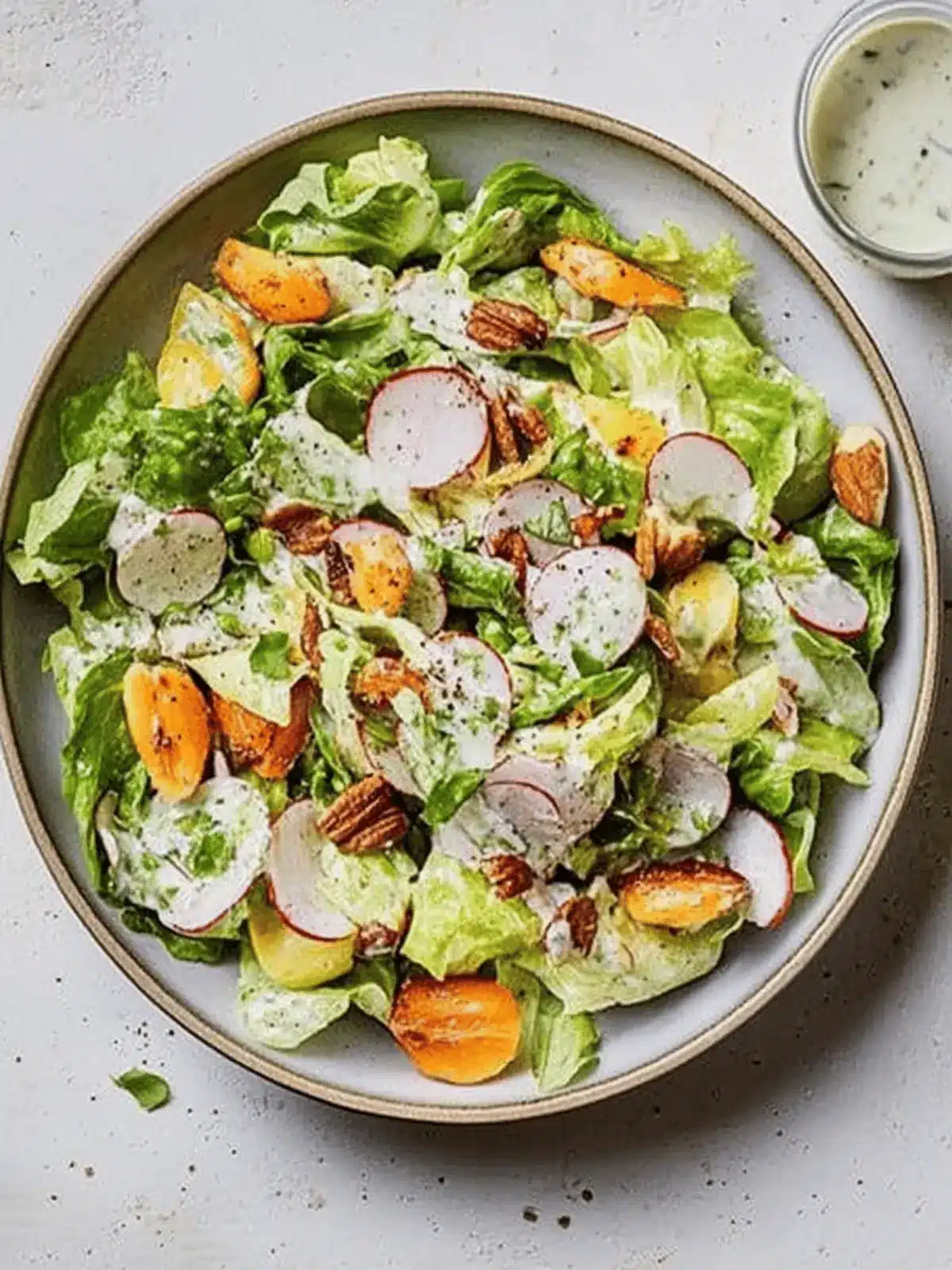
Fresh Summer Salad with Clean Eating Buttermilk Dressing Delight
Ingredients
Equipment
Method
- In a sealable jar, combine buttermilk, Greek yogurt, minced shallot, garlic, thyme, parsley, and apple cider vinegar. Shake vigorously until well blended. Season with salt and black pepper to taste, then refrigerate for up to three days.
- In a large mixing bowl, toss together the Boston lettuce, radishes, grated carrots, fresh peas, and chopped asparagus. Ensure the vegetables are evenly mixed.
- Drizzle the creamy buttermilk dressing over the salad mixture, then gently toss to coat all the vegetables thoroughly.
- Before serving, sprinkle fresh sprouts over the top for added nutrition and appealing presentation.

